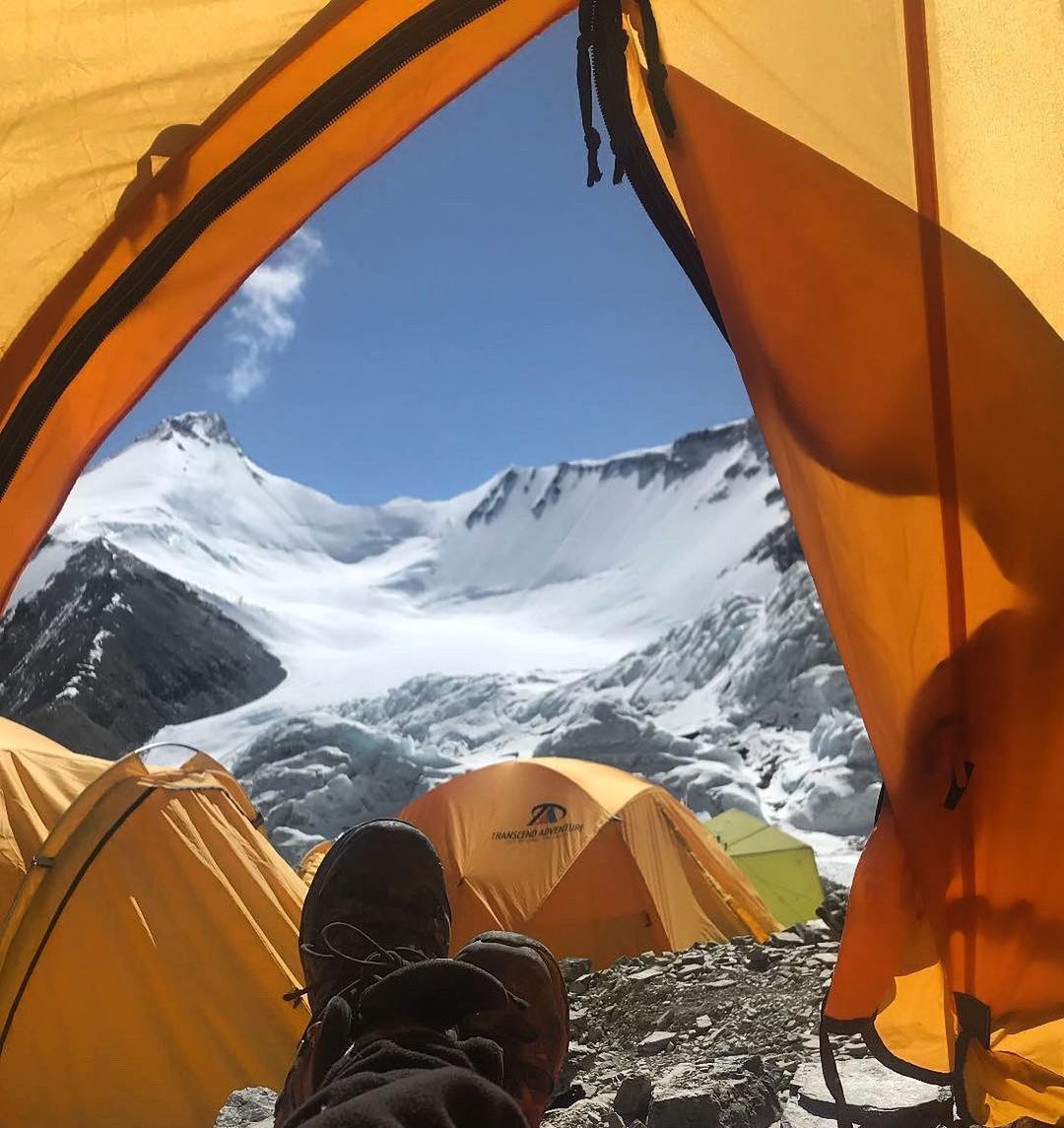
I'm going to paint a picture for anyone living under the rock and doesn't know Deeya Bajaj.
> Went sea kayaking of the coast of Greenland at the age of 14
> Did cross country skiing on the Greenland ice cap at the age of 17
> Climbed Mt. Everest with her father in 2018
> Finished climbing the Seven Summits in 2022
What many may not know is that you were a very good swimmer in school. Did you compete and how did you get started?
Being physically active has always been a big part of my life. From a very young age my parents have encouraged both my sister and I to take up a variety of sports. Whether it is taekwondo, tennis, swimming or anything else. Although both my sister and I got black belts in taekwondo, I was super passionate about swimming. I did end up competing at the school national level but then started looking at adventure sports more seriously.
Akhil: That discipline set up the foundation for bigger things later.
Absolutely, in swimming you spend so much time with our thoughts, specially long distance swimming gives your a lot of time to introspect. I keep going back to it. Infact, I just came from a swim. There's something very meditative about it. I read you hallucinated while skiing in Greenland?
I have always enjoyed reading and making up stories. Whenever my family would go on long drives, I would tell my younger sister these really long stories. When we were out in Greenland for the 21 day long skiing expedition, I was 17 years. When you swim you are with your thoughts for an hour or two, here you are alone for 8-10 hours everyday. The wind speeds are so high that even when you are together on a break, you can't hear anything.
The only way to keep myself entertained was to talk to my shadow. It laughed at all my jokes.
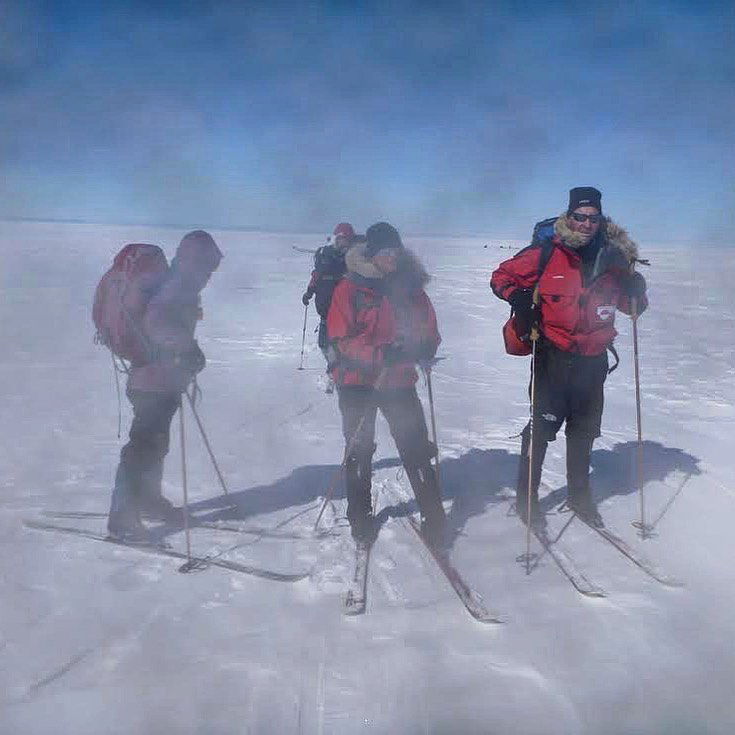
How did you put together your Everest support team?
We were planning to climb from the north side of Everest (Tibet / China). Our sherpa buddies came from Nepal. My father is a stalwart in the Indian adventure industry and he had finalised a company called Transcend Adventures.
We did our due diligence on them and had a lot of conversations with them. By the end of it, Shekhar Babu, the founder became a very good friend of both my dad and I.
It started with us telling them what are climbing ethos were.
For my mother to let half her family go on a challenging climb like this, it was important that we left no stone unturned when it came to the preparation. This included our support team. Even though we were climbing together, we were clear that dad and I should have separate sherpas. We wanted to build a strong relation with our sherpa buddies. We also communicated to them that while climbing if we come across another climber struggling for life, our priority will be to save that human and not worry about summit.
Summit is never the goal, coming back safely is.
We flew to Nepal to have these discussions, get to know our support team. As a team our goals for the expedition were aligned.
Akhil: The level of details and thought put into the expedition says a lot about your climbing principles.
There were 8 other climbers that went with the same company. We two were like the sub expedition team within the larger expedition group. We would do our own timings and meet in the evening. Our company was opening the routes this year so they had a large support crew. That made base camp a very happy place and you feel safer when there are so many resourceful people around you.
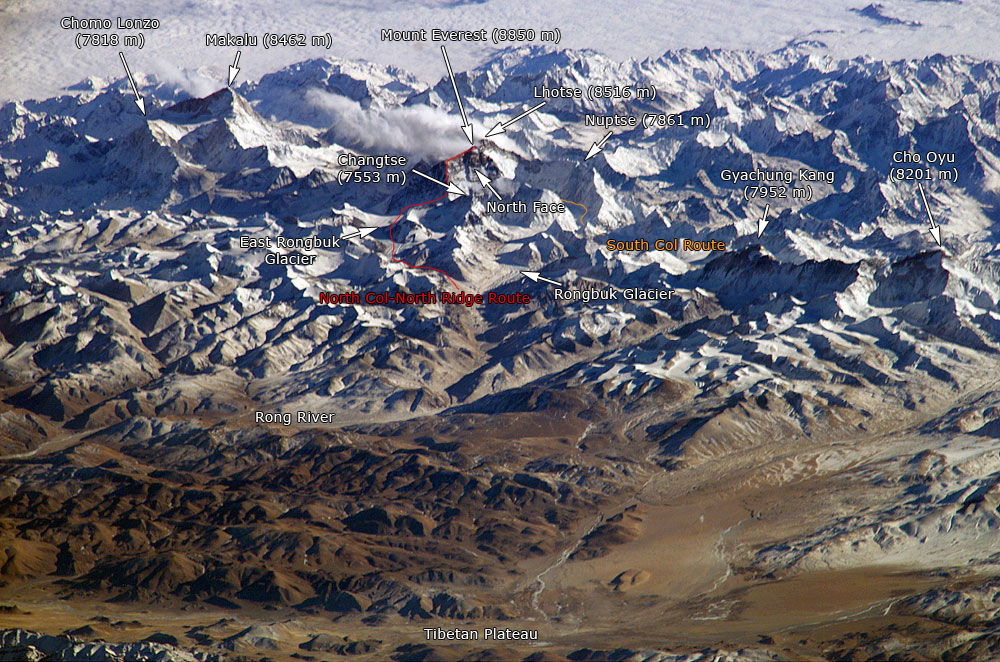
Historically, north side of Everest was favoured by climbers until China started taking a hard stance and then south side became more crowded.
If the south side has the dangerous Khumbu glacier the north has harsher weather. If the south has a lot of people climbing from it's side there are no rescue operations available from the north side.
How did you decide on North side?
You're right. The north is more windier, colder, steeper, technically more challenging, camps are a little more higher. The final summit camp is at 8300m. But because it is steeper, there's less chances of an avalanche. You also don't have to cross the Khumbu icefall which to me is the most dangerous part of the mountain. Lastly, you don't have a crowd.
We can train harder for the climb. Not having a rescue service is the harsh reality of climbing from the north side.Let's take a deep dive in how you train and nourish for Everest - mental, physical, nutrition.
The only way to train the mind is to keep on going to difficult expeditions. I believe in positive visualisations. For two years we were eating, sleeping, dreaming about Mt. Everest.
I would workout for 4 hours daily. I like to mix things up, so I would run, swim, cycle, box, play tennis, lift weights for quads and back, muscles you use a lot in the mountains. Climb up stairs, take the lift down. So about three hours of cardio, 1 hours of strength training, daily.
On the weekend I would try and go to the foothills of Himalayas. We get a lot of school kids in our adventure company, so I would take them for short treks. Load up 20 liters of water in a backpack and start climbing.
We also did four practice expeditions. We wanted to train at higher altitudes, test our gear and be on the same page when we went to climb Everest.
Cheat days?
Absolutely. You don't want to burn out. Once a week I would take it easy, let the body recover.
Good thing about these expeditions is that you want to go with a little extra weight. By week 6, your entire fat is gone. I was eating a lot of protein, vegetables, but honestly, I would eat anything - sugar, cookies, carbs. Diet is not really a word in my vocabulary, just proper nutrition. How do you approach visualisation?
I'm sure there are better ways of doing this but for me it starts with centering myself. To remind myself, why am I doing this?
Every night before bed and every morning before getting out of bed, I imagined myself on that journey, on the climb. At times when I was struggling in training, I would tell myself 'ok, imagine if you were in the middle of a storm on Everest, will you push forward?'
So I would draw these parallels, I would also picture myself taking those last few steps and reaching the summit, that I would be exhausted but how amazing it would feel, picture coming down safely.
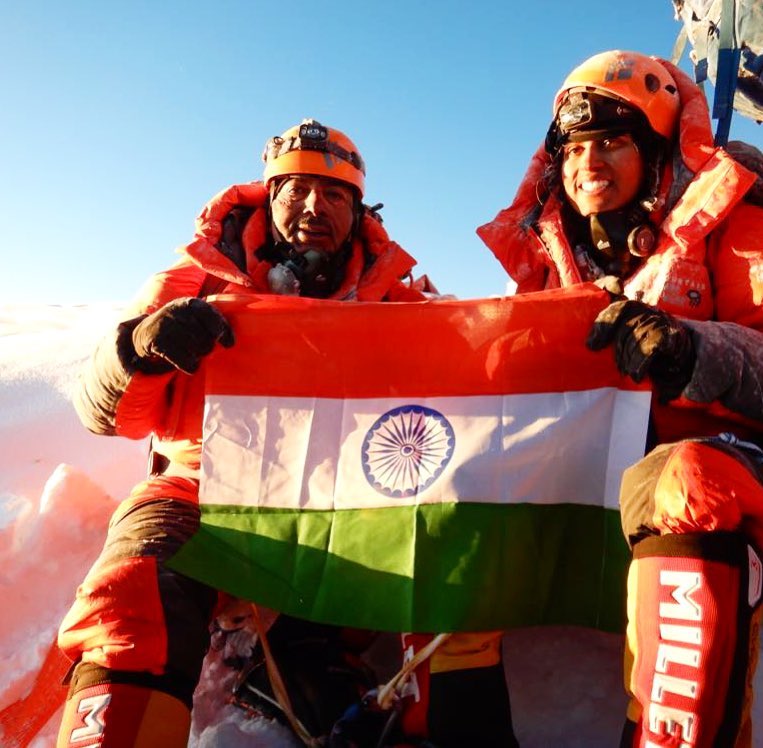
Did you eat anything while climbing Everest?
Deeya: We had energy gels and bars that I kept handy and unwrapped in my pocket. I would eat them every few 2-3 hours. You have to force yourself to drink water. You don't really feel like eating or drinking but with experience you know that you have to.
Do you fast during training?
You know, I didn't put this together until recently but fasted workout is something I've been doing since growing up. I didn't have any meals before going for swimming practice in the morning. Even now I don't eat till later in the day.
It completely simulates what happens in the mountains. You have these extended periods of time and your body has to learn to use other reserves for fuel versus the constant influx of regular meals. Fasted workouts work really well for high altitude expeditions. I was doing them without even realising.
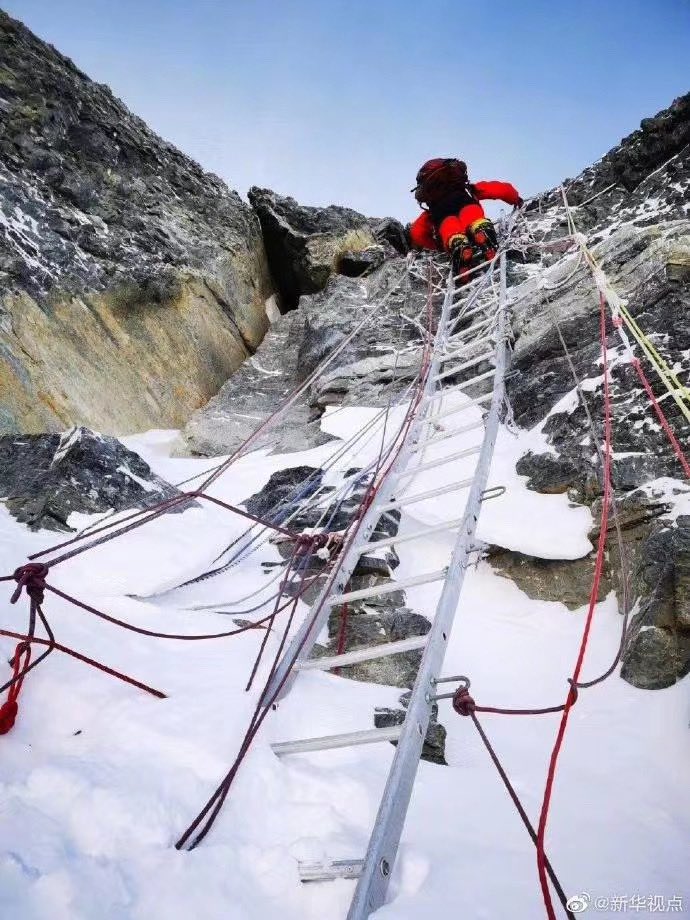
Are there any ladder crossing from the north side?
There's one. It's called the Second Step and it's pretty challenging. The ladder was put up by the Chinese during their second attempt on Everest. You're wearing heavy gear, crampons and attached to a jumar. Can't really practice for it.
Some things sound scary but when you're in the mountains and you're so focused, you know what you have to do and you don't fear it anymore.
Did you encounter any dead bodies?
Yes. When you're 26 you don't think about your mortality. You know it's dangerous but you never really think you would die. I saw one climber lying on the ground, like someone just lying there taking rest. Wearing the same equipment as you, maybe a few models older than yours, same down suit, boots, one of his glove was off and you could see the skin.
It drives homes that you own mortality as a climber is real and all you can is keep going.
You don't have the time to reflect then and I blocked it out. But when I came down I thought about it even more. The sherpas believe it's bad luck to touch the dead body. They end up being there, covered and uncovered by snow. Towards the tail end of your summit climb, your fathers' mask froze. How did you handle the situation?
The path we were climbing was extremely narrow. There were four of us and other climbers would soon by coming from behind. It was 3 am, I had lost every ounce of fat in my body, standing there was just not an option because if the body stopped generating heat, it would be trouble. My father said 'Deeya, you have to keep going forward.' The brain is fuzzy at that altitude. With a heavy heart, I left. I didn't even realise when I reached the summit because I was so nervous inside, waiting for Dad. I was up there at 4:15am, sat for about 10 minutes just below the summit. When the sun started to rise on Mt Everest, it was the most beautiful sunrise I've ever seen, I finally saw Dad and we spent the most memorable time at the summit. If was very difficult to be in a positive mindset.
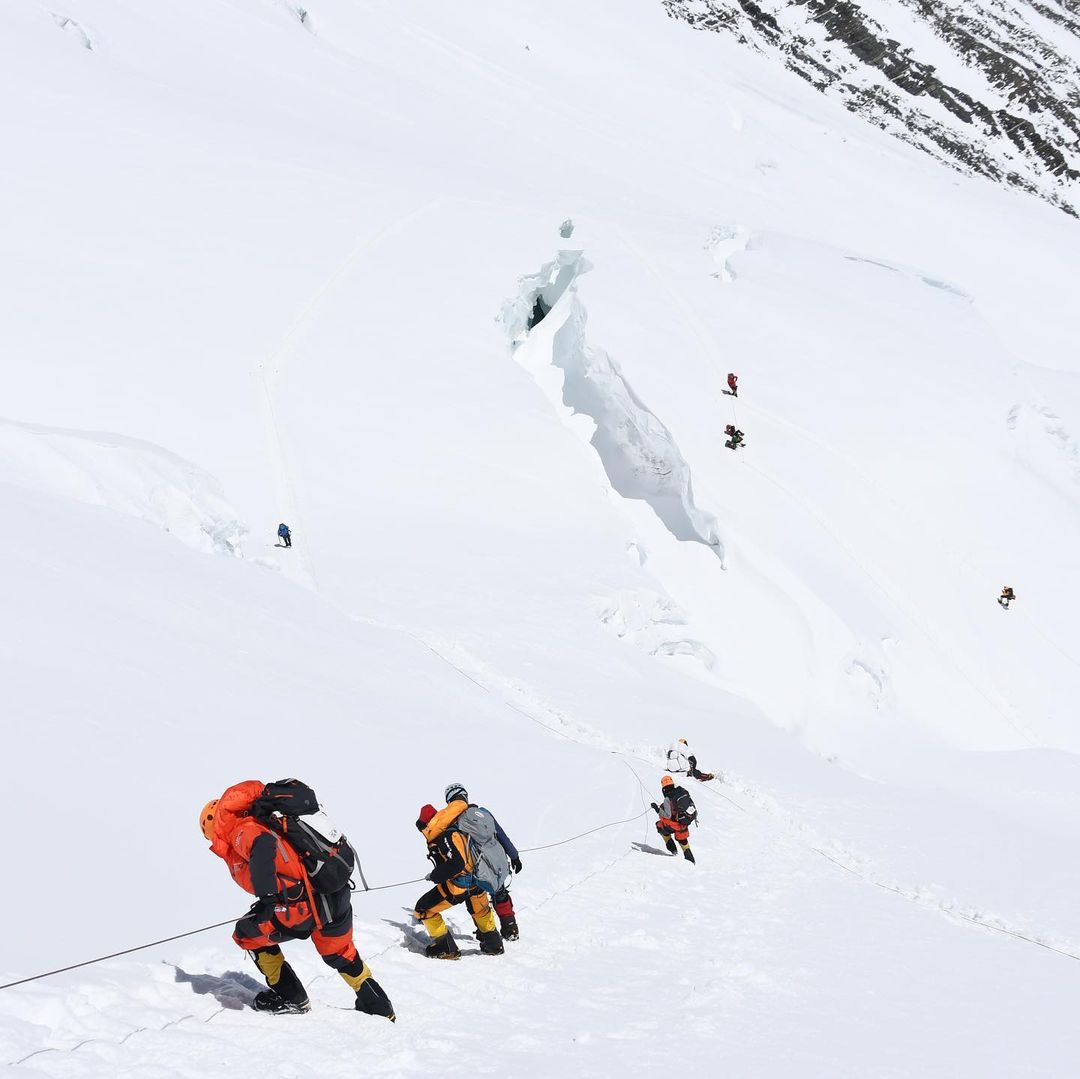
What advice do you have for athletes looking to raise funds for their 8000m expeditions?
When we went for Everest we were very clear what our underlying motivation was for the climb. We had a very strong cause and message to communicate. When you are passionate why you're doing something that comes through. You then want to align brands that believe in that message.
If Deeya Bajaj had magical powers, how would you go about protecting the mountains from the devastation we are causing?
I believe it starts with you, first. Both Dad and I had very strict 'leave no trace' ethos while climbing.
I've seen some incredible work being done in Alaska on Denali where you carry everything back, including human waste. When you dig a hole and leave waste there, it doesn't disappear. It's only out of sight, out of mind.
Be diligent about asking trek operators what procedure do they follow to remove waste from the mountains.
Take nothing but photographs, leave nothing but footsteps.
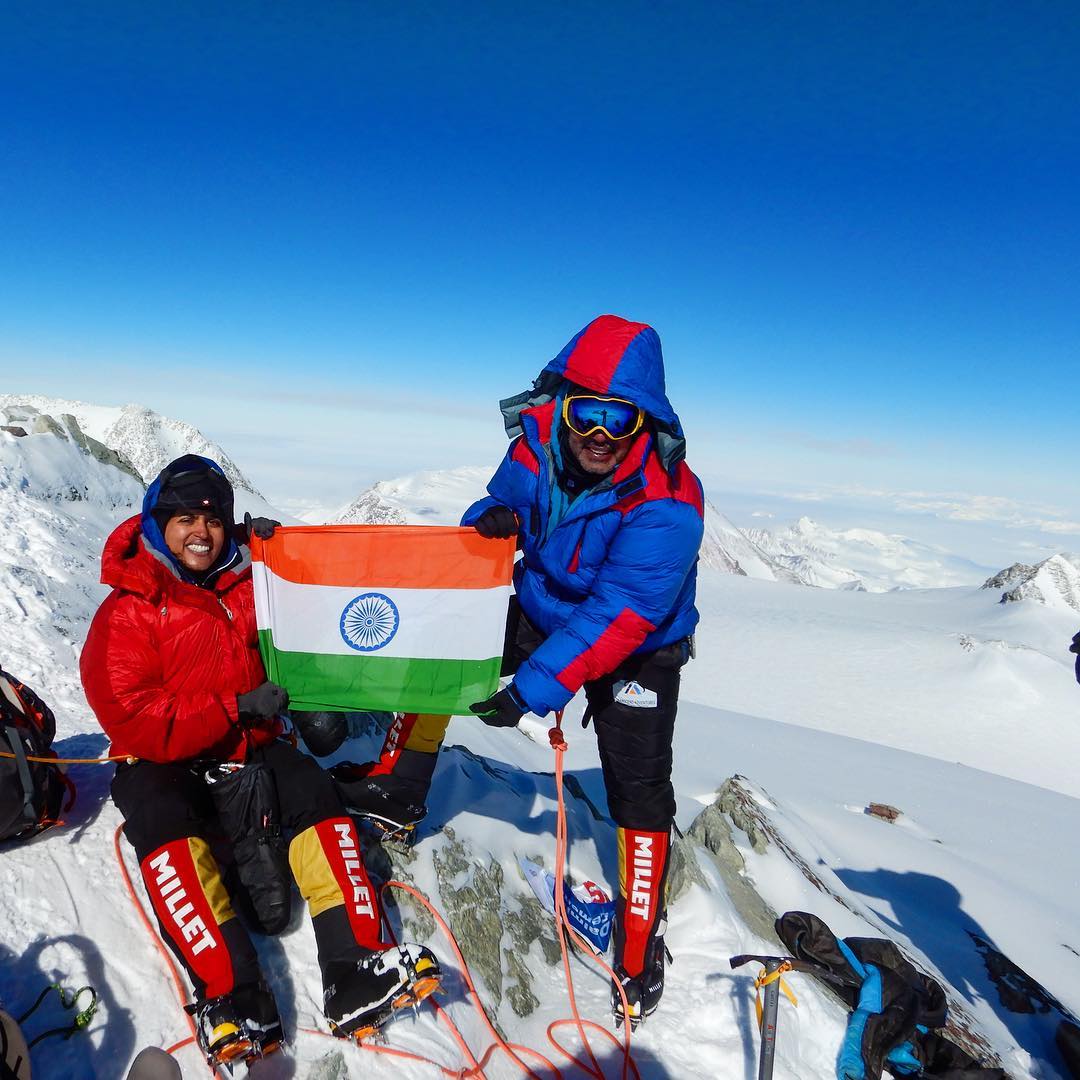
It was such a pleasure to speak to Deeya. Not to take even an ounce away from her efforts, determination and courage but I salute her parents for doing a wonderful job supporting and encouraging their daughter to pursue her dreams.
Even better when you have same adventurous goals and get to do them together.
Jai Hind.
